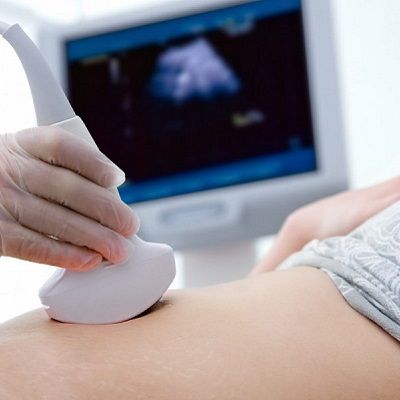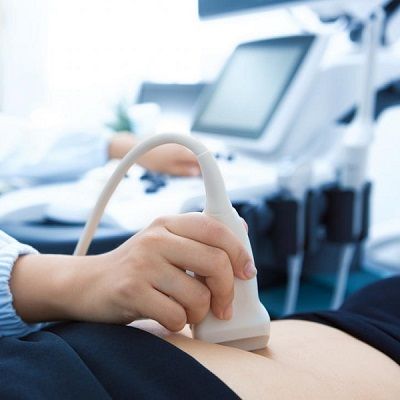
Since the medical industry is progressing with each passing day, therefore, we are also able to see the changes in our internal bodies. Ultrasound is one of the safest imaging techniques that can take an image of the internal body. Similarly, pregnant women can also get to know about their internal condition and the development of the fetus through gynecological ultrasound. It is very important to assess the development and growth of the fetus. Moreover, it can also aid people in diagnosing different concerns that relate to the female reproductive system. This early investigation can be basic in resolving issues like uterine fibroids, ovarian growths, endometriosis, or polycystic ovarian condition (PCOS) expeditiously. The best way to Pioneering Approach to Women’s Health: Gynecological Ultrasound that can lead to early intervention, improved health outcomes, and an enhanced quality of life for women.
What Is It?
Gynecological Ultrasound in Dubai is a clinical imaging strategy that utilizes high-recurrence sound waves (ultrasound) to make itemized pictures of the female reproductive organs and pelvic region. This harmless and safe imaging method is usually utilized in gynecology and obstetrics to survey the well-being and state of different regenerative designs, including the uterus, ovaries, fallopian tubes, cervix, and encompassing tissues.
Types:
It has two types
Transabdominal:
In this kind of ultrasound, the transducer is moved over the midsection and lower pelvic region, as a rule with a gel applied to the skin to further develop sound wave transmission. It frequently helps in early pregnancy appraisals and assesses bigger structures like the uterus and ovaries.
Transvaginal:
For this kind, an exceptionally planned transducer is embedded into the vaginal canal. Transvaginal ultrasounds give more point-by-point and more clear pictures of the pelvic organs, particularly the ovaries and early pregnancy structures. It usually approaches infertility evaluations and research conditions like ovarian growth and endometriosis.
Method:
During this method, a proficient healthcare expert puts a little handheld gadget, a transducer on the abdomen, or supplements it into the vaginal canal, dependent upon the specific kind of ultrasound being performed. A water gel is put on to the skin of your lower midsection (for transabdominal ultrasound) or to the transducer (for transvaginal ultrasound). The gel chips away at the transmission of sound waves and ensures extraordinary contact between the transducer and your skin or vaginal wall.
The transducer discharges sound waves that bounce off the interior organs and make pictures on a screen. These pictures give significant data about the size, shape, surface, and bloodstream of the conceptive organs, permitting medical services suppliers to analyze and screen a scope of gynecological circumstances and pregnancy-related issues.
Condition It Detects:
It fills different needs, including diagnosing gynecological problems, checking pregnancies, evaluating infertility issues, directing specific operations, and giving important information about female well-being.
Pregnancy-Related Issues:
The doctors regularly utilize it during pregnancy to screen fetal turn of events and identify conditions like ectopic pregnancy, molar pregnancy, and fetal anomalies.
Uterine Fibroids:
It can recognize the presence, size, and area of uterine fibroids (harmless developments in the uterus). This data is urgent for deciding the suitable treatment approach.
Ovarian Growths:
This can analyze ovarian cysts, including functional and complex cysts that might require further assessment.
Endometriosis:
While not a conclusive indicative device for endometriosis, ultrasound can propose the presence of endometrial tissue outside the uterus by recognizing unusual tissue development or bonds.
Polycystic Ovary Condition (PCOS):
Ultrasound frequently helps to survey the ovaries in ladies associated with having PCOS. It can uncover different little cysts on the ovaries and assist with affirming the finding.
Abnormal Uterine Bleeding:
It can also help to find the reason for unusual uterine bleeding. For example, distinguishing uterine polyps, fibroids, or primary anomalies.
Aftercare:
Since this strategy is a safe and non-invasive procedure, there are no specific after-procedure guidelines to follow for the individuals. However, the doctors suggest some aftercare guidelines that are.
- Continue regular exercises.
- Remain hydrated with liquids.
- Gentle uneasiness might happen; counsel your doctor if necessary.
- Expect gentle vaginal release after transvaginal ultrasound.
- Go to follow-up arrangements as your doctor proposes
- Continue any briefly halted prescriptions.
- Contact your healthcare expert assuming you experience serious agony or strange side effects.
- Make sure to questions or look for an explanation from your medical care provider
Book Your Consultation!
Get in touch with Dynamic Clinic in Dubai for Pioneering Approach to Women’s Health: Gynecological Ultrasound. The process of booking a consultation at our clinic is very simple and patient-centered. You only have to complete the form and our friendly and knowledgeable staff will book your appointment.


































